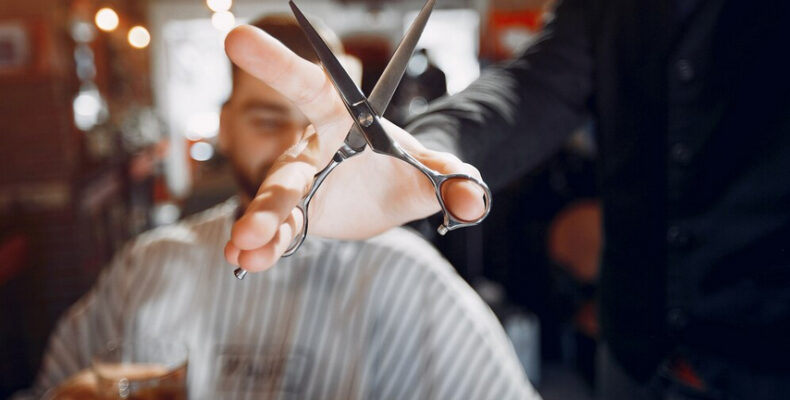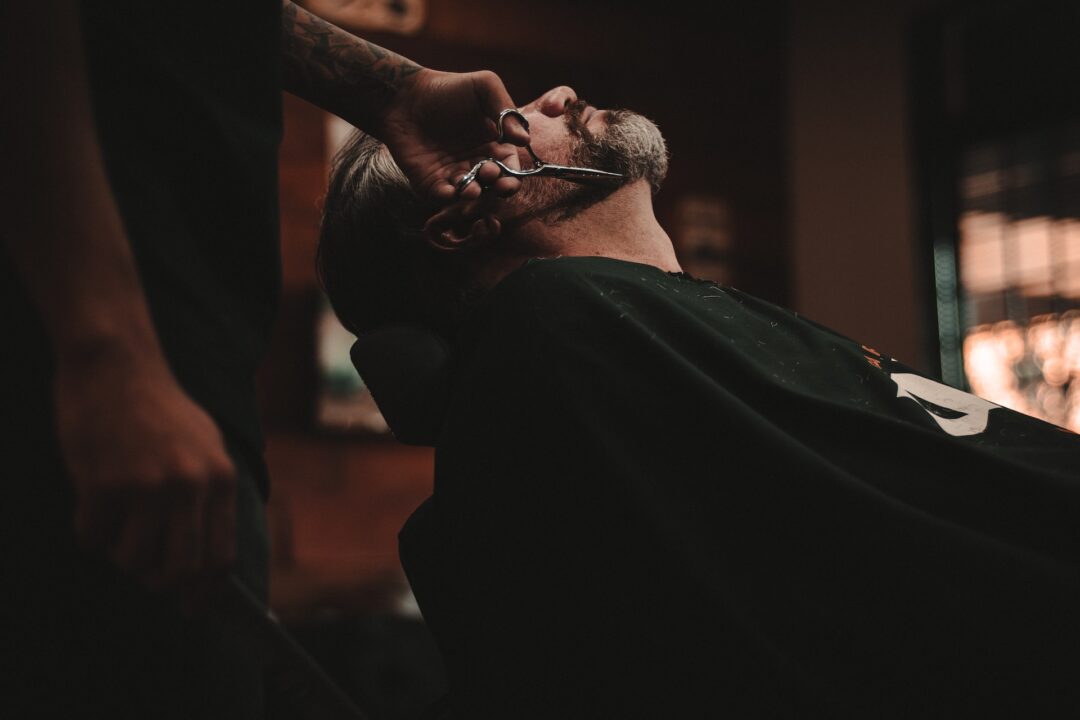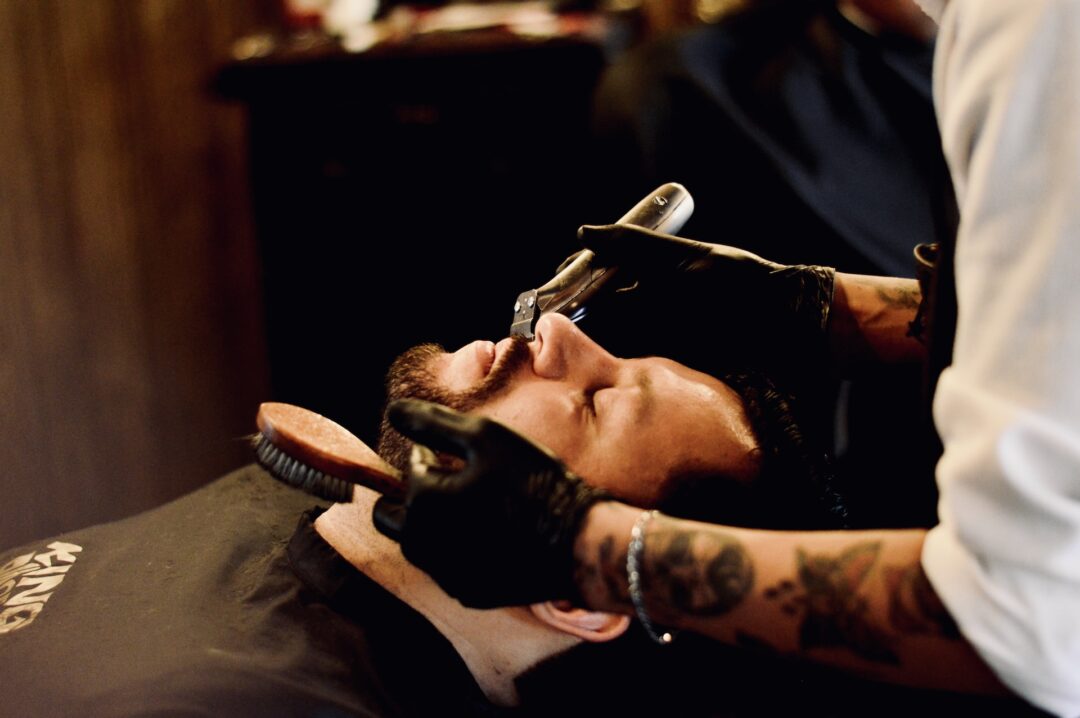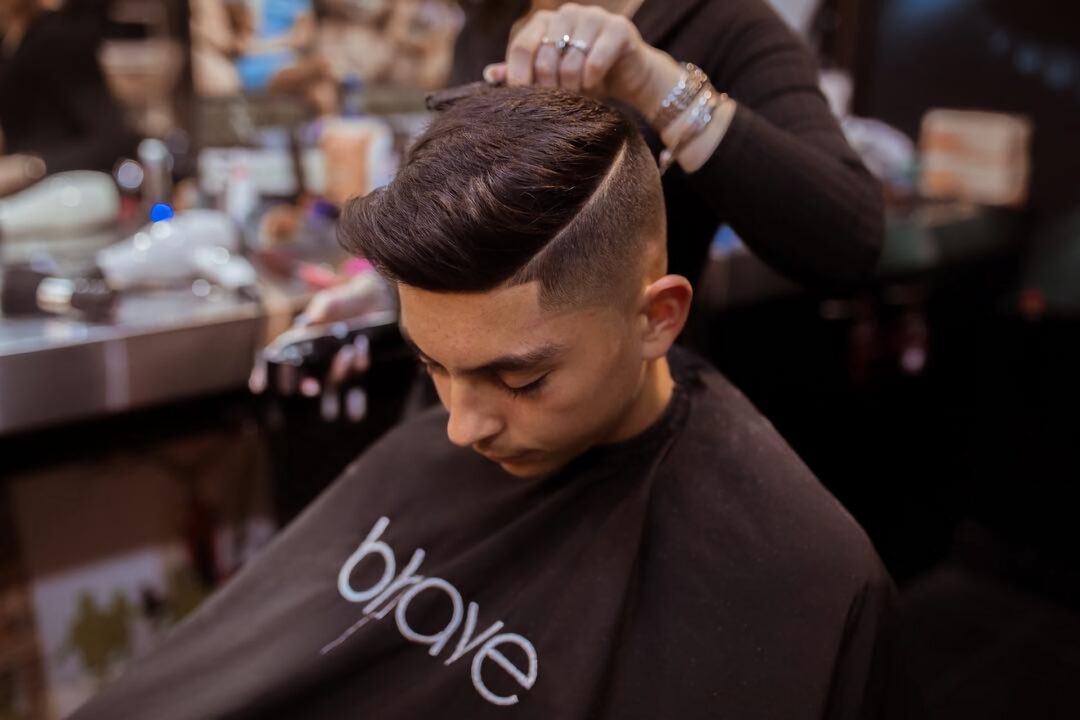Popular male hairstyle terms include the fade and the taper. At first glance, the differences between a fade and a taper haircut may seem minor. However, if you take a closer look, you’ll see that there are certain characteristics that none of these categories have. In addition, the age-old dispute between high and low fade hairstyles continues to divide the fashion set. In this article, I’ll go over the several options so you can pick the one that works best for you.
Understanding the Basics: Fade vs Taper Haircut
Both options are visually distinctive in their own ways, and picking one over the other can make or break your ensemble. Let’s go into the nuances of high fade and low fade haircuts, comparing and contrasting the two in terms of their beginning and ending locations, the impact they produce, and the ideal contexts in which to sport each.
High Fade Haircut
A high fade haircut is distinguished by its initiation point, which is located high on the sides and back of the head. Typically, the high fade begins just below the temple region. This positioning contributes to a few key features that define the high fade:
- Pronounced and Edgy Appearance: One of the most striking characteristics of a high fade haircut is the sharp contrast it creates between the top of the head and the sides. The abrupt transition from long hair on top to short, almost shaved sides, gives a pronounced and edgy look that grabs attention;
- Distinctive Top-Side Division: The high fade excels at creating a clear separation between the longer hair on the crown and the closely cropped sides. This distinctive top-side division is ideal for those who want a bold and noticeable style;
- Ideal for Sharp Contrasts: If you desire a hairstyle that offers a dramatic contrast between the upper and lower portions of your head, the high fade is a perfect choice. It’s a go-to option for those who love a sharp, trendy appearance.
Low Fade Haircut
Conversely, the low fade haircut commences at a lower point on the sides and back of the head, typically just above the ears. This difference in starting point gives the low fade its own unique set of characteristics:
- Timeless Elegance: Embrace a classic and understated aesthetic with the low fade hairstyle. Its gradual transition from the sides to the top embodies a timeless charm, radiating sophistication and grace;
- Seamless Flow: In contrast to the high fade’s abrupt change, the low fade boasts a smooth and gradual transition, seamlessly connecting shorter sides to longer top hair. This creates a pleasing and uninterrupted flow that captures many hearts;
- Adaptability at Its Best: The low fade’s versatility knows no bounds, accommodating various hair lengths and styles with ease. Whether you fancy a textured crop or a polished slicked-back appearance, the low fade serves as a dependable canvas for diverse hairstyles.
High Fade vs. Low Fade: Which One to Choose?
The choice between a high fade and a low fade ultimately depends on your personal preferences and style goals. Here’s a quick breakdown to help you decide:
- High Fade: Ideal if you want a bold, edgy, and attention-grabbing hairstyle. It’s perfect for creating a distinct separation between the top and sides of your head;
- Low Fade: Great for those seeking a classic, refined appearance with a smooth transition from the sides to the top. It works well with various hair lengths and styles.
Fade Haircut vs Taper: A Comparative Analysis
To further elucidate the differences between a fade haircut vs taper, here’s a comparative breakdown:
| Feature | Fade Haircut | Taper Haircut |
| Starting Point | Extremely short, almost skin-close. | Moderately short but not as close-shaved as fades. |
| Transition | Pronounced, especially in high fades. | Gentle and more consistent. |
| Versatility | Best for modern, edgier styles. | Versatile; suitable for both contemporary and traditional looks. |
| Maintenance | Requires frequent trims to retain the fade’s sharpness. | More forgiving with infrequent trims. |
Popular Variations and Trends
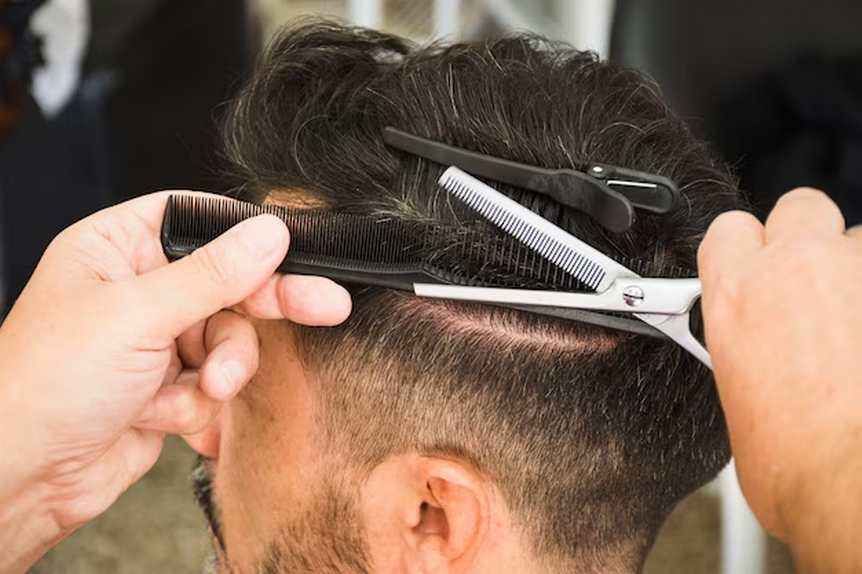
Beyond the basic fade vs taper haircut discussion, numerous variations and trends have emerged over the years:
Undercut Fade
The undercut fade is a dynamic hairstyle that seamlessly merges the sharpness of an undercut with the gradient effect of a fade. This style usually involves shaving or clipping the hair very short on the sides and back, while leaving the hair on top longer.
- Style: It exudes an edgy, modern vibe and makes a bold fashion statement;
- Maintenance: The undercut fade demands frequent maintenance to keep the fade lines sharp and distinct;
- Versatility: Its adaptability lies in choosing the length and style of the hair on top, allowing for customization.
| Characteristics | Details |
| Hair Length on Top | Longer |
| Hair Length on Sides | Short (fade effect) |
| Styling Options | Versatile; can be styled up or slicked back |
| Ideal Face Shape | Works well with most face shapes |
| Maintenance | High (requires frequent trims) |
Taper with a Side Part
The tapered hairstyle, characterized by its short sides and back seamlessly transitioning into longer locks atop the head, stands as a timeless and sophisticated choice. Often accompanied by a stylish side part, this haircut exudes an aura of refined elegance.
- Style: This classic look exudes vintage charm and is suitable for various occasions;
- Maintenance: Regular trims are necessary to maintain the clean lines of the taper and side part;
- Versatility: The side part can be customized with different styles, such as a hard part or a softer, more natural part.
| Characteristics | Details |
| Hair Length on Top | Moderate length |
| Hair Length on Sides | Short to medium (tapered) |
| Styling Options | Can be parted to the side or slicked back |
| Ideal Face Shape | Suits a variety of face shapes |
| Maintenance | Moderate (regular trims needed) |
Textured Taper
The textured taper is a contemporary twist on the classic taper haircut. It involves adding texture to the hair on top while maintaining the taper effect on the sides and back. This texturing adds depth and dimension to the overall style.
- Style: This modern and relaxed look is characterized by its textured, tousled appearance, making it perfect for casual yet sophisticated occasions;
- Maintenance: Achieving the desired texture may require styling products, and occasional trims are necessary to maintain the taper;
- Versatility: Different texturing techniques, such as point cutting or texturizing shears, can be employed to achieve varying levels of texture.
| Characteristics | Details |
| Hair Length on Top | Longer with texture |
| Hair Length on Sides | Short to medium (tapered) |
| Styling Options | Textured and tousled for a relaxed look |
| Ideal Face Shape | Complements most face shapes |
| Maintenance | Moderate (styling products needed) |
Faux Hawk
The faux hawk is a bold and trendy haircut that mimics the look of a traditional mohawk without shaving the sides completely. Instead, the hair on the sides is tapered or faded, leaving a strip of longer hair down the middle.
- Style: It exudes a rebellious and contemporary vibe, perfect for those seeking an attention-grabbing style;
- Maintenance: Requires regular trims to maintain the distinctive shape of the faux hawk;
- Versatility: The length and thickness of the central strip can be adjusted according to personal preference.
| Characteristics | Details |
| Hair Length on Top | Longer central strip |
| Hair Length on Sides | Short (tapered or faded) |
| Styling Options | Central strip can be spiked up or styled in various ways |
| Ideal Face Shape | Works well for most face shapes |
| Maintenance | Moderate to high (regular trims needed) |
Disconnected Undercut
The disconnected undercut features a clear contrast between the shaved or closely cropped sides and back and the longer hair on top. There is a distinct “disconnect” between the two sections of hair.
- Style: This bold and dramatic haircut offers a unique, avant-garde appearance;
- Maintenance: Requires regular upkeep to maintain the clean, disconnected look;
- Versatility: The length and style of the hair on top can vary, allowing for personalization.
| Characteristics | Details |
| Hair Length on Top | Longer, with a clear contrast to the sides and back |
| Hair Length on Sides | Shaved or closely cropped |
| Styling Options | Versatile; can be styled in various ways |
| Ideal Face Shape | Works well with most face shapes |
| Maintenance | Moderate to high (regular trims needed) |
Conclusion
The choice between a fade vs taper haircut or the nuances of a high fade haircut vs low fade boils down to personal preference, lifestyle, and desired maintenance level. Both styles have their unique appeal, and modern barbering techniques have only increased the versatility of these haircuts. Regardless of your decision, always remember that the key to a great haircut lies not just in the style, but in its execution. So, always trust a skilled barber to bring your vision to life!
FAQs
1. Which lasts longer: a fade haircut vs taper?
Tapers generally last longer without needing touch-ups, while fades, especially high fades, may need more frequent maintenance.
2. What products work best for a high fade haircut vs low fade?
High fades often benefit from stronger hold products to accentuate the contrast. Low fades can use lighter products for a more natural look.
3. Is it easier to transition from a fade to a taper or vice versa?
Transitioning from a fade to a taper might require some time to let the hair grow, while moving from a taper to a fade is simpler as it involves cutting the hair shorter.
4. If I’m undecided between a low fade haircut vs high fade, what should I consider?
Consider the maintenance, the look you’re aiming for, and how bold you want the transition to be. Consulting with a barber can also provide clarity.
